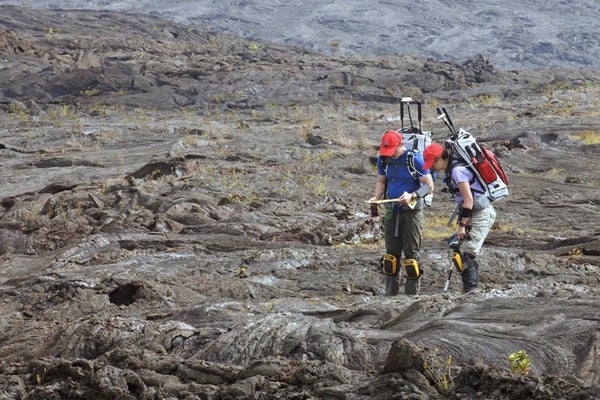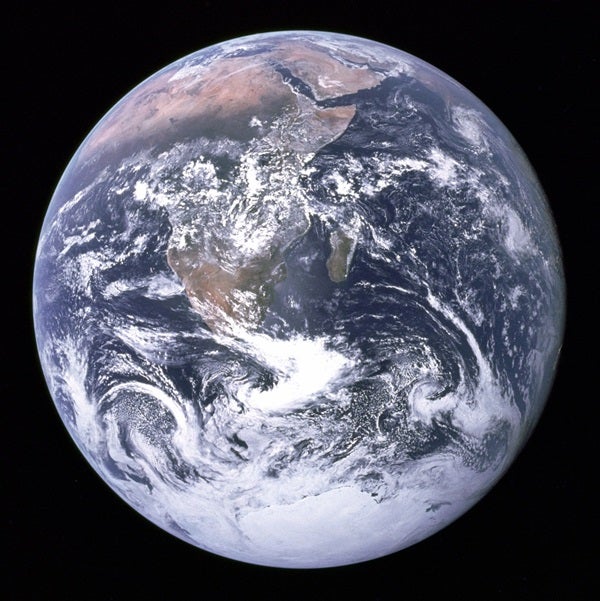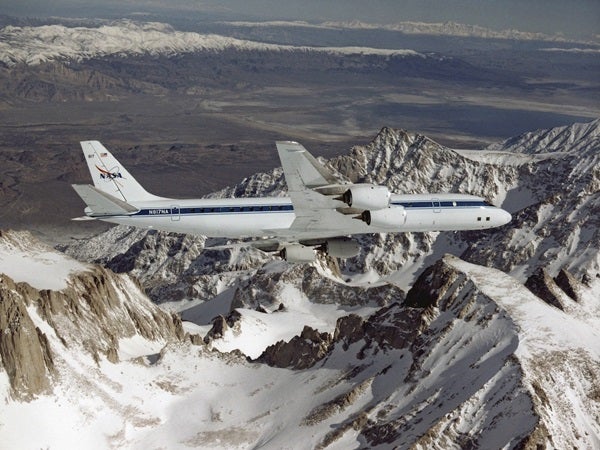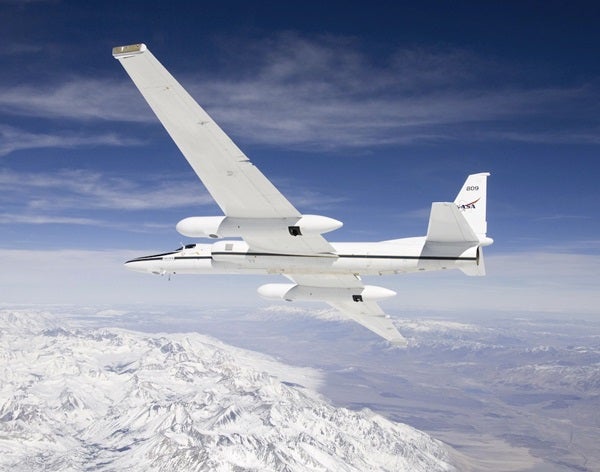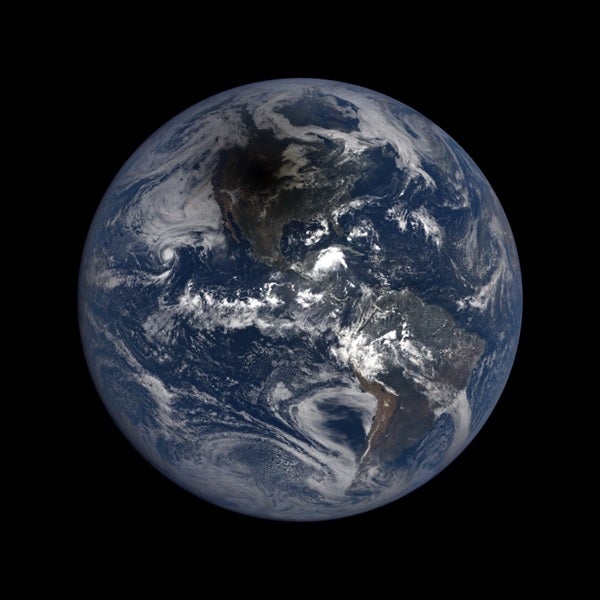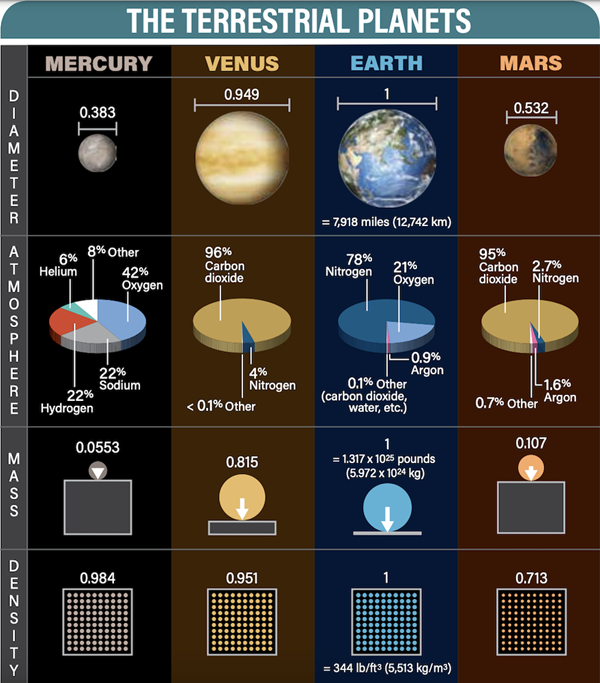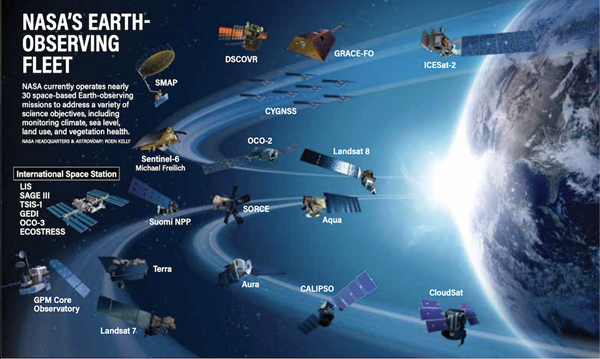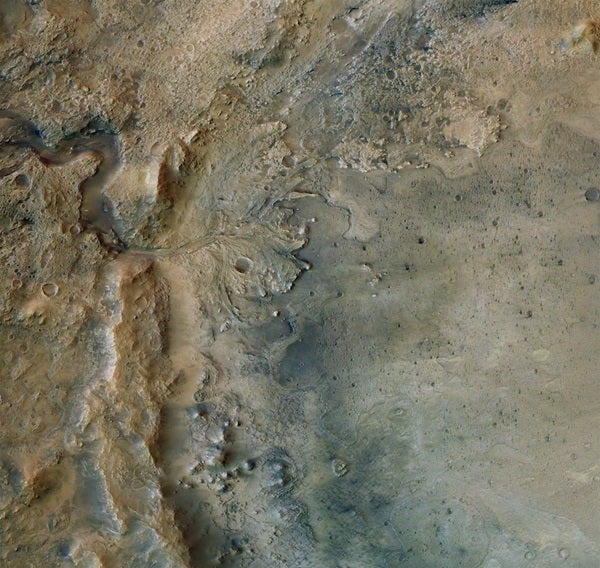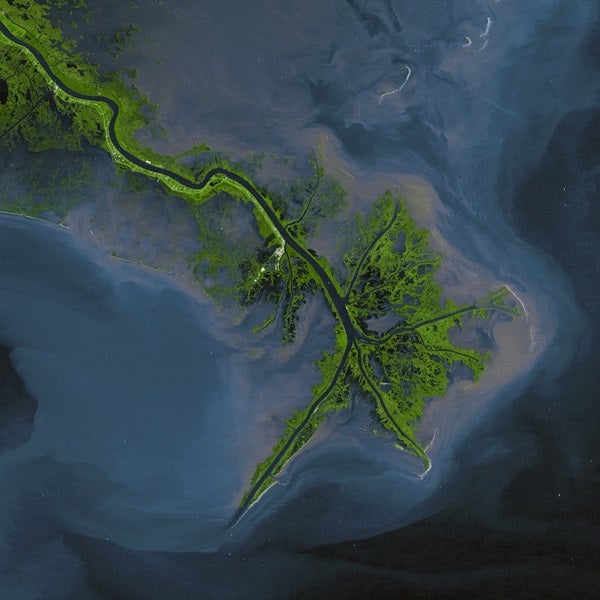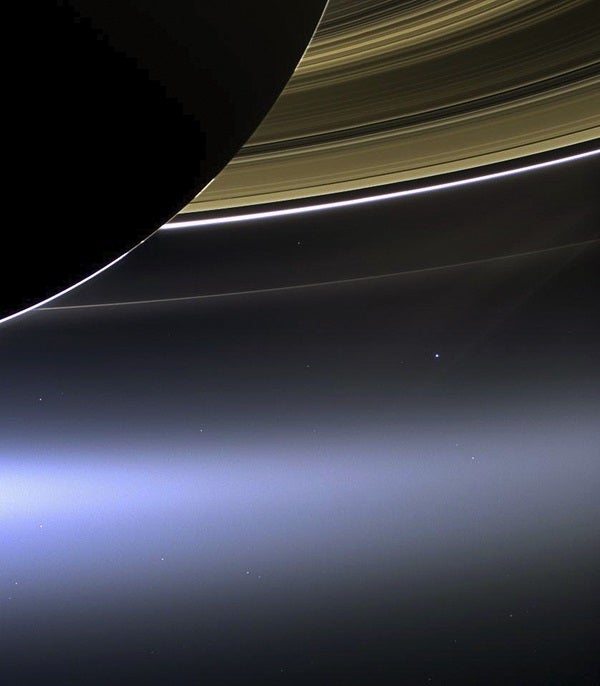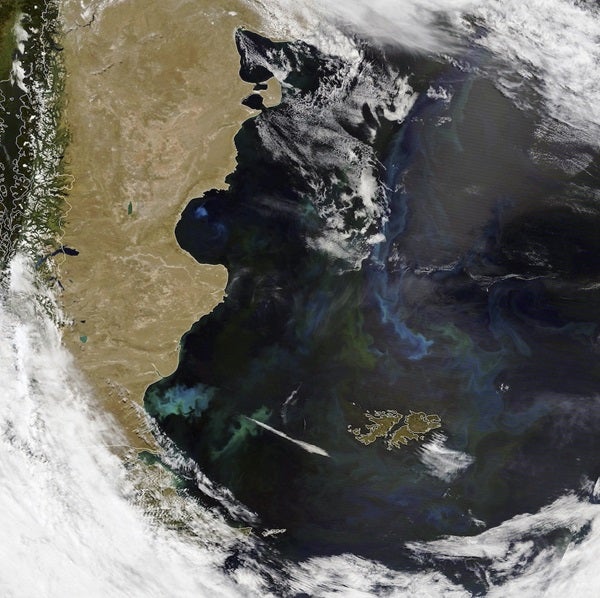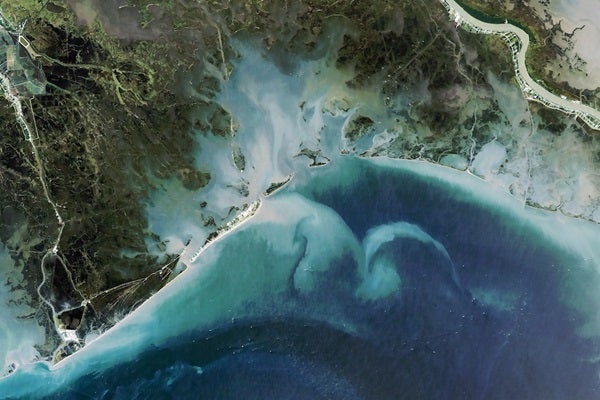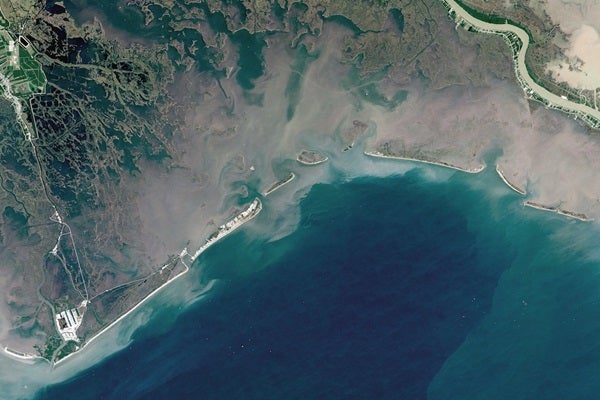In 2017, NASA celebrated 20 consecutive years of Mars exploration — the longest humankind has continuously monitored another planet. But there’s a key phrase in that statement that’s easy to overlook: another planet. Even as planetary scientists strive to understand the fellow planets circling our Sun, it’s worth remembering that we have the perfect scientific testbed right at our fingertips.
As the most familiar planet — and perhaps the strangest — Earth gives us insight into the forces that shaped our solar system, revealing clues about how rocky planets form and evolve. Studying Earth lets us walk before we run, testing techniques and technologies in a familiar setting before sending them to other worlds.
But the more we learn, the more we see that our planet is one of the weirdest places we’ve ever encountered, uniquely shaped and forever altered by the life-forms it sustains.
Comparative planetology
Every planet in our solar system formed from the same ingredients: gas and dust in the solar nebula around our nascent Sun. The inner planets assembled closer to our star, where temperatures were warmer, meaning volatiles — elements that turn into a gas at low temperatures — were rare. As a result, these planets are largely rocky, with atmospheres and surface water that came much later, released through geologic processes or delivered by impacts.
Although their sizes, compositions, and distances from the Sun differ, the basic processes that formed and shaped Mercury, Venus, Earth, and Mars can be read in the rocks right under our feet. “The same physics apply on all the planets,” says Rebecca Ghent, a senior scientist at the Planetary Science Institute whose current work focuses on the geology of Earth, the Moon, and Mars. It’s the ways in which those physics play out, she says, as well as which ingredients are available on each planet, that create the differences that provide vital clues about planetary evolution.
All the terrestrial planets, she says, are subject to gravity-driven effects such as cratering, sedimentation, and landslides; interior-driven processes such as volcanism; and processes driven by water on or below the surface. Taken together, “comparative studies of the planets can tell us lots more about the underlying processes than we can learn from studying a single planet in isolation,” Ghent says.
NASA’s fleet of airborne observatories includes a DC-8 aircraft (above) modified to carry a slew of instruments that can be swapped out for each new mission. The agency also operates the ER-2 (below) — a modified U2 spy plane capable of reaching altitudes up to 70,000 feet (21,000 m).
Essentially, instead of starting from scratch to understand a given world, scientists can instead apply their knowledge of how processes work on one planet (say, Earth) to extrapolate how they work somewhere else. This is called comparative planetology, and it’s a valuable first step when looking out across the solar system.
“Terrestrial analogues and how we can study specific locations on Earth and apply that knowledge to places that seem completely unterrestrial, like [Saturn’s moon] Titan or certain places like Mars or Venus, are all really important,” says Matthew Chojnacki, a research scientist also at the Planetary Science Institute and a participant in the High Resolution Imaging Science Experiment, or HiRISE, orbiting Mars.
Sometimes, processes are no longer active but have left signs of their presence, Ghent says. Based on how the presence of water has changed Earth’s landscape over time, scientists have identified widespread evidence of flowing surface water on Mars in the planet’s past.
One such place is the river delta preserved inside Jezero Crater, where NASA’s Perseverance rover touched down in February. John Mustard of Brown University chairs the Mars 2020 mission’s Science Definition Team and is one of many planetary scientists studying the site. Among other features of interest, Jezero contains the mineral magnesite, whose formation suggests the region has been altered by water. Furthermore, “Some magnesite deposits on the Earth are tightly coupled to a biological setting,” Mustard says, making Jezero an intriguing location to search for signs of ancient life — one of the rover’s four main science objectives.
Meanwhile, Perseverance’s predecessor, Curiosity, has shown researchers that Gale Crater, an ancient lakebed, once experienced conditions akin to modern-day Iceland. To make the find, published Jan. 18 in JGR Planets, researchers compared soil formed in various locations on Earth to the readings sent back from the rover. “Earth provided an excellent laboratory for us in this study,” said co-author Kirsten Siebach of Rice University in a press release announcing the discovery. “The range of climates on Earth allowed us to calibrate our thermometer for measuring the temperature on ancient Mars.”
Something in the air
Geology isn’t the only feature researchers can compare between planets. On Earth, weather prediction and climate modeling have become integral to our daily lives. Over the past several decades, meteorologists have developed sophisticated models based on advanced observations of how our atmosphere works.
While Earth’s atmosphere certainly contains a different mix of ingredients than its neighbors, both near and far, the underlying physics that govern how an atmosphere acts remain the same. “Climate models that have been created for the Earth are now increasingly being adapted to look at other planets: Mars, even the gas giants, and exoplanets,” says Richard Eckman, program manager for NASA’s Atmospheric Modeling and Analysis Program.
Eckman also serves as the earth science representative to the cross-divisional exoplanets science program at NASA. This group, he says, seeks to better understand exoplanets by exploiting the similarities between observing our planet and, as technology progresses, observing planets around other stars. “We are able to test the models on Earth, and we have some confidence in [the] physics and parameterizations and so forth,” he says. “Obviously, for the gas giants and these other very different kinds of atmospheres, I think that there’s a lot of adaptation that’s done. But for terrestrial-like planets, certainly Mars and terrestrial exoplanets, the modifications are more straightforward.”
So close, yet so far
Despite the many benefits of using Earth as a laboratory, the comparison eventually breaks down. “Venus, Earth, and Mars are on a continuum, where you have major changes in temperature, you have major changes in atmospheric pressure and atmospheric composition, and those bring some serious challenges to not just operating in those environments, but also in comparing the different geologic processes that are occurring there, because they’re not exact,” Chojnacki says.
For example, Mars today experiences a carbon dioxide cycle, while Earth supports a water cycle. But because water and carbon dioxide behave differently — especially under martian and terrestrial conditions — the two cycles are similar but not directly comparable.
Similarly, while martian winds sculpt the landscape just as terrestrial winds do, Mars’ atmosphere is much thinner and its winds subsequently much weaker. “You don’t see sand dunes migrating [on Mars] like they do in Egypt, for example,” Chojnacki says. On Mars, “you have to wait a decade to see the kinds of changes that you might see in the African sand seas in just a month. There is a more muted effect because of the differences in atmosphere.”
“As we study comparative planetology, you think, ‘Let’s study these terrestrial planets, the rocky ones. They all should follow the same [evolutionary] path.’ And they don’t,” Mustard says. “There’s this stochasticity, this randomness that comes into play. And I think that’s a fascinating part of it. Earth is fantastic, we really know how it operates, but we can’t be naïve enough to think that every planet operates that way.”
Earth science
NASA’s Earth Science Division seeks to understand our planet as a unique environment in its own right. “Studying the Earth from space has always been an important part of NASA’s mandate,” says Hank Margolis, program manager for NASA’s Terrestrial Ecology Program. “NASA and other space agencies have a large fleet of satellites that make observations of the Earth’s surface and its atmosphere.”
Earth science research currently receives about $1.9 billion from NASA’s budget each year — on par with the amount awarded to the agency’s astrophysics division, which studies the larger universe as a whole. As of early 2021, NASA operates around 30 space-based Earth-observing missions, including joint missions with other agencies. By comparison, NASA has about half that many interplanetary missions scattered throughout the solar system.
And Earth scientists have more than satellites at their disposal. Airborne missions provide measurements close to the ground that are difficult or impossible to make from low Earth orbit, Eckman explains. These missions target a variety of areas, ranging from air quality and cloud formation to the amount of ice, coral, or vegetation on land or sea. Many airborne missions also provide a cost-effective way to test technologies ultimately bound for space, whether aboard Earth-orbiting satellites or a spacecraft destined for another world.
Decades of observations have revealed that the surface of Mars was much wetter in the past. The Perseverance Mars rover’s landing site in Jezero Crater (above) shows the telltale features of an ancient river delta. For comparison, below is the Mississippi Delta, photographed by NASA’s Landsat 7 in 2001.
Cameras and other passive sensors record the amount of energy, such as reflected sunlight, coming from the planet. For Earth, Margolis says, that information can be related to “the biophysical properties of the land surface, such as the amount of leaves, the absorption of radiation by vegetation canopies, the types and the changes of land cover, the area of snow cover.”
Active sensors send out signals, such as radio waves (radar) or laser light (lidar), which bounce off land and water, reflecting back to the spacecraft. Scientists can then determine how the signal has changed and relate those changes to properties of the planet below. The most recent addition to the Earth-observing fleet, Sentinel-6 Michael Freilich, uses radar to measure sea level of more than 90 percent of Earth’s oceans to within just a fraction of an inch. Lidar allows researchers to visualize the vertical structure of vegetation, while radar can characterize vegetation even through cloud cover, Margolis says. Studying all these aspects of Earth allows researchers to understand how our planet is evolving and predict how land, water, and vegetation might change in the future.
A unique perspective
Naturally, most Earth-observing satellites orbit Earth, with many in geostationary orbits that keep them above one region of the planet even as it rotates. But one mission is different: Launched in 2015, the Deep Space Climate Observatory (DSCOVR) was originally proposed in the late ’90s by then-Vice President Al Gore. But the spacecraft was put on hold for decades until the Obama administration resurrected it as a joint heliophysics and earth science mission, says Eckman.
Now operated by NASA, the U.S. Air Force, and the National Oceanic and Atmospheric Administration, DSCOVR is located roughly 1 million miles (1.5 million kilometers) from Earth, positioned between our planet and the Sun at a stable Lagrange point where the gravitational influences of our planet and our star cancel each other out. From this vantage point, called L1, the mission studies the solar wind in real time, offering warnings as much as 60 minutes before solar storms hit our planet. But DSCOVR also looks back at Earth, snapping photos every two hours at 10 different wavelengths that include ultraviolet and infrared light (those images are available daily to the public at https://epic.gsfc.nasa.gov/).
“But it’s way more than pretty pictures,” Eckman says of DSCOVR’s earth science contributions. “Amazingly, from a million kilometers out, we can measure ozone and aerosols and clouds and sulfuric acid droplets from volcanic eruptions and all kinds of cool stuff, useful stuff — and looking uniquely at the entire Earth in a way that even geosynchronous weather satellites can’t.”
Even at its vast distance, DSCOVR’s camera can resolve areas as small as about 16 miles (25 km) across. And because it regularly takes global pictures, Eckman says, DSCOVR can look at certain aspects of vegetation — like the size of plant canopies or the amount of biomass present — more easily than satellites closer to the planet. Plus, DSCOVR’s pictures show diurnal, or daily, variations across the planet that can’t be observed from low Earth orbit. “DSCOVR has made the case of being a highly productive science instrument apart from the daily RGB [true-color] visible images that are probably what most people think about,” Eckman says.
The strangest planet?
Such long-term observing campaigns of Earth have taught scientists one sure thing: Our planet is unique and bizarre, with unusual properties that don’t match those of any other world we’ve seen, either in our own solar system or beyond it.
Earth is the only planet with abundant liquid water driving an active water cycle. From weather to weathering, the effects of water are everywhere. Our home world is also the only known planet with active plate tectonics, in which distinct pieces of crust are constantly created and destroyed in a planetwide recycling program that drives phenomena like earthquakes and volcanoes. Tectonic activity is even responsible for releasing volatiles from Earth’s interior, which helped create — and now maintain — our atmosphere.
Then there’s the Moon. “Without the catastrophic Moon-forming impact very early in the solar system’s history, the Earth would not be the way it is today, at all,” Mustard says. That impact and the satellite it formed have affected everything from the strength of Earth’s tides to the stability of our planet’s 23.4° tilt. Without the Moon, our tides would be solely influenced by the Sun — and, given its vast distance, would consequently be much weaker. This would have brought about very different landscapes at the interface where water meets land. And with no Moon, our planet’s rotation axis would wobble unpredictably, destabilizing the climate on timescales of just a few thousand years.
Perhaps in part because of all these factors, Earth is, thus far, the only planet we know of that hosts life. And that life has left its mark on our world. “Over geologic time periods, the Earth’s vegetation has played a major role in the evolution of the atmosphere,” Margolis says. In fact, “vegetation is largely responsible for the current level of oxygen in the atmosphere: 20 percent.”
Earth started out with an atmosphere rich in methane and carbon dioxide. But photosynthesis, the process by which plants convert sunlight and carbon dioxide into energy, releases oxygen as a byproduct. “There was life in existence as photosynthesis was getting going,” Mustard says. “But then, 2.5 billion years ago, Earth pivoted to an oxygen [atmosphere] and it just killed off [nearly] all the early forms of life. It was just a catastrophic moment for life at that time.” But that catastrophic moment paved the way for life — and Earth — as we know it today.
Yet another curious characteristic of our planet: Earth has a huge number of minerals. Referencing work led by Robert Hazen of the Carnegie Institution for Science, Mustard explains that meteorites — leftover planetary building blocks — have a small number of minerals. “Then on the Moon, you’ve got an increasing number.” Finally, he says, “You go to the Earth and it’s just ridiculous.”
Why is this? The prevalence of water isn’t enough to explain the disparity, Mustard says. But “if you look at Earth’s history, the number of minerals that we know exist increases with time,” he explains. “You had these big explosions of mineral diversity something like 600 million years ago — which coincides with the emergence of life on land. [Life] just changes the chemical reactions, the environment, so much. … The coevolution of life and geology on Earth — we can’t disentangle that, I don’t think.”
The signs of natural settling, human-built levees and canals, and global sea-level rise are all imprinted upon Louisiana’s Barataria Bay, which appears here on Aug. 31, 1985 (above), and Oct. 2, 2020 (below). As a result of both natural and human-induced change, the region has lost as much as 430 square miles (1,120 square km) of land in less than 100 years.
But perhaps the clearest example of life shaping Earth’s land, sea, and air is much more recent — and, in fact, currently playing out. “I’d say humans are among the dominant forces of change on the planet,” Mustard says. Much of his career has been dedicated to observing how Earth’s surface changes in response to both natural and human forces. And there are plenty of human forces at work.
We remove or replace vegetation. We exhaust or reroute water supplies. We populate and reshape coastlines. And we produce or release massive amounts of atmosphere-altering gases. Many of these effects can be observed with relatively coarse data and commercially available software, Chojnacki says.
Fortunately, earth science is different from other planetary science in one final, fundamentally important way: Earth science is actionable science. By monitoring the changes our host planet undergoes, we can make choices and take actions that reduce or alter our effect on the landscape.
“What we learn from spaceborne measurements can have very practical applications to human society — e.g., wildfire management, forest management, disaster management, improving agriculture, managing air pollution, managing biodiversity, etc.,” Margolis says. And Chojnacki notes that the same remote-sensing techniques researchers use to determine how humans are affecting the planet can also show us how well mitigation efforts are progressing.
Earth and Venus: Separated at birth
Venus and Earth are stunningly similar; in fact, Venus is often called Earth’s sister planet. At first glance, it’s easy to see why: Earth is a mere 1.1 times as wide and 1.2 times as massive as Venus, and they’re made up of largely the same material in equal amounts.
Yet, the two look vastly different. It’s an experiment in how small initial differences can snowball into huge effects further down the line, leading one planet to become the lush, water-filled paradise we enjoy today, while the other becomes a broiling, toxic wasteland. But research suggests both may have started out with roughly the same amount of water. So, what happened? That’s the million-dollar question.
We do know that Venus rotates retrograde, or backward, compared to its orbital motion around the Sun — the only planet to do so. Although its core is still hot, like Earth’s, Venus has no plate tectonics. Its oppressively thick atmosphere is about 96 percent carbon dioxide, 4 percent nitrogen, and less than 0.1 percent other gases. Earth has a comparatively light atmosphere consisting of 78 percent nitrogen, 21 percent oxygen, and 1 percent other gases.
Despite these differences, Earth’s strange sister still has much to offer. Venus doesn’t look much like modern-day Earth, but scientists think the two were much more similar shortly after formation, potentially making Venus a good analogue for a younger Earth.
“Venus is the only planet that can teach us both about early Earth and the birth of both plate tectonics and continents — two processes that have profoundly shaped life on Earth,” says Suzanne Smrekar, principal investigator of the Venus Emissivity, Radio Science, InSAR, Topography & Spectroscopy (VERITAS) mission, which is currently under consideration for NASA funding. Smrekar also worked on the Magellan spacecraft that orbited Venus in the early 1990s.
“On Earth, plate tectonics is the fundamental process that links the interior heat engine to surface geology and releases (and recycles) volatiles from the interior to create the atmosphere,” Smrekar says. “Yet this process began billions of years ago, leaving only vague clues about how it started. There are many models but little data. By going to Venus … we have a chance to see processes that shaped the birth of our home planet in action!” — A.K.
Beyond Earth
Despite its strangeness, Earth is the planet we are most familiar with and are best suited to survive on. Thus, it serves as a necessary jumping-off point when humanity turns its gaze outward. NASA once trained the Apollo astronauts to become lunar field geologists by taking them to Hawaii or Arizona. And researchers today are setting up simulated Mars camps in Utah and Hawaii or traveling to Antarctica to test how easy — or hard — it will be to carry out geologic research with rovers and in space suits. “It’s useful to be on Earth and actually have a timeline and try to understand how you’re going to collect that many geologic samples in eight hours with your supplies when you’re in the field — and how complicated that gets in reality,” says Chojnacki. “Field studies and terrestrial applications are certainly going to pave the way for lunar and martian exploration.”
And as Eckman points out, several exoplanets have been identified in recent years with at least some Earth-like characteristics. Based on our understanding of the solar system, terrestrial planets, at their core, all likely share at least a somewhat similar origin story.
But, Mustard says, “Planets are built by chance. And we should be grateful and thankful that the chances that came together that formed the Earth resulted in this. It just says it’s a special place and let’s not mess it up.”
Editor’s note: An earlier version of this story incorrectly stated that Earth is 1.1 times wider and 1.2 times more massive than Venus. The text has been updated for accuracy.

